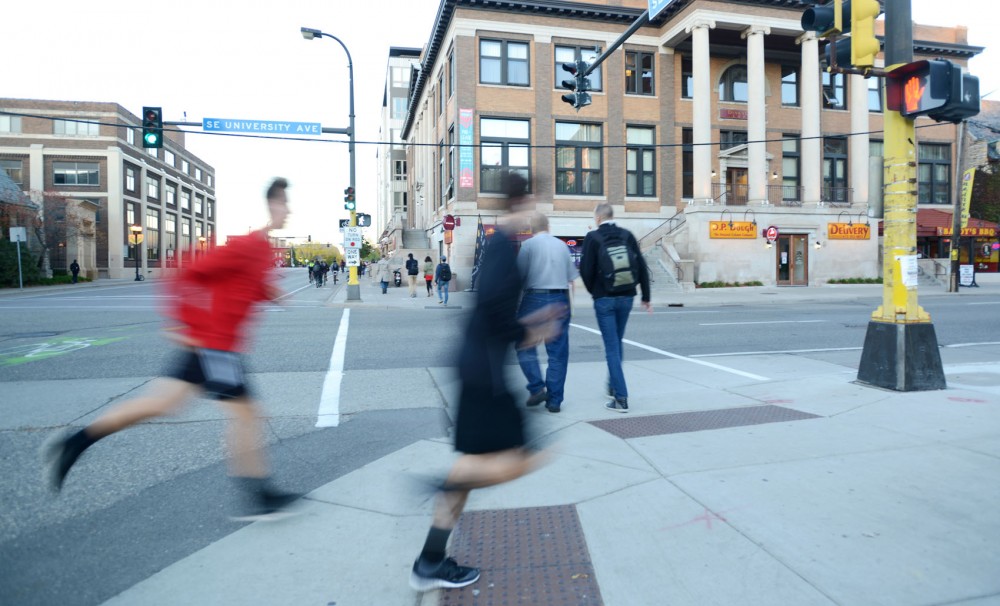Shorter days and students’ return to campus makes fall the deadliest time of year for pedestrians across the state.
And as the season continues to set in, the Minnesota Department of Transportation is reminding pedestrians and motorists to watch out for each other.
“With more hours of darkness in the fall, pedestrians are more difficult to see,” said MnDOT state traffic engineer Sue Groth in a press release.
In addition, the scramble to enjoy the last of the year’s decent weather adds to the reasons why fall is the most dangerous time of the year to be a pedestrian, said
Melissa Barnes, statewide bicycle and pedestrian safety engineer at MnDOT.
About 30 percent of crashes with walkers happen during weekday rush hours, according to the press release. One-fourth of deaths occur between the hours of 9 p.m. and 3 a.m.
Twenty-three pedestrians have been killed and 655 injured this year in Minnesota. Last year, 17 died and 837 were injured, according to MnDOT.
While motorists are responsible for accidents with pedestrians about 50 percent of the time, Barnes said determining specific reasons for crashes between the two can be
difficult.
“The ‘whys’ are really hard to answer,” she said.
Not paying attention, not crossing at a crosswalk and ignoring signs or signals could all be among the causes of crashes between drivers and walkers, according to MnDOT.
At the University, Deputy Police Chief Chuck Miner said accidents tend to be the fault of pedestrians. He said they are often preoccupied or looking at their phones when crossing the street, which increases their odds of causing an accident.
And with the Metro Transit Green Line light rail bisecting campus, awareness of one’s surroundings is especially important, said Ross Allanson, director of the University’s Parking and Transportation Services.
To help reduce pedestrian deaths and injuries, educational campaigns and engineering solutions, like roundabouts, lane reductions and beacons to signal drivers where crosswalks are could be used to reduce accidents, Barnes said.
In the end, pedestrian safety hinges on how aware motorists and pedestrians are of each other, she said.
“It’s really both [pedestrians and motorists] watching out for each other and using common sense,” Barnes said.








